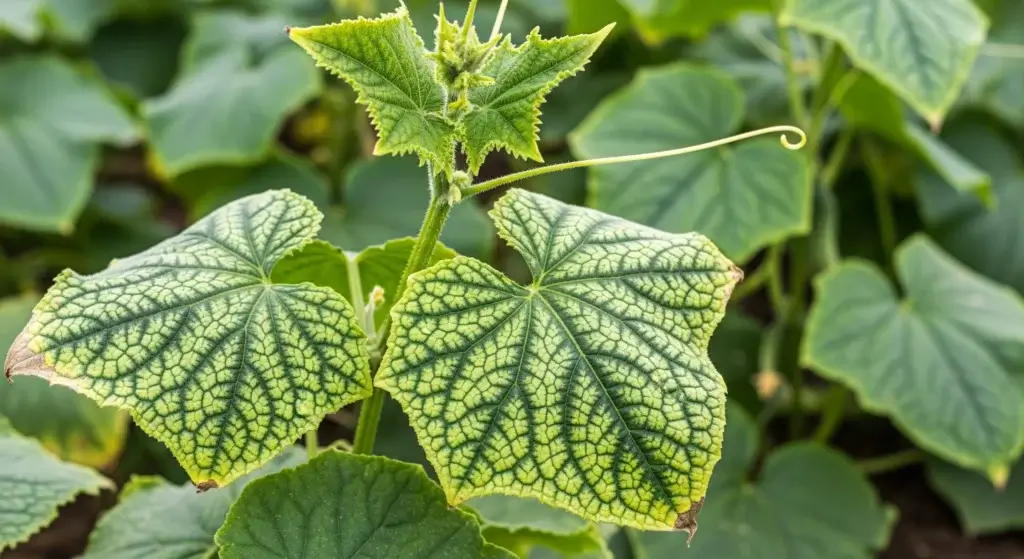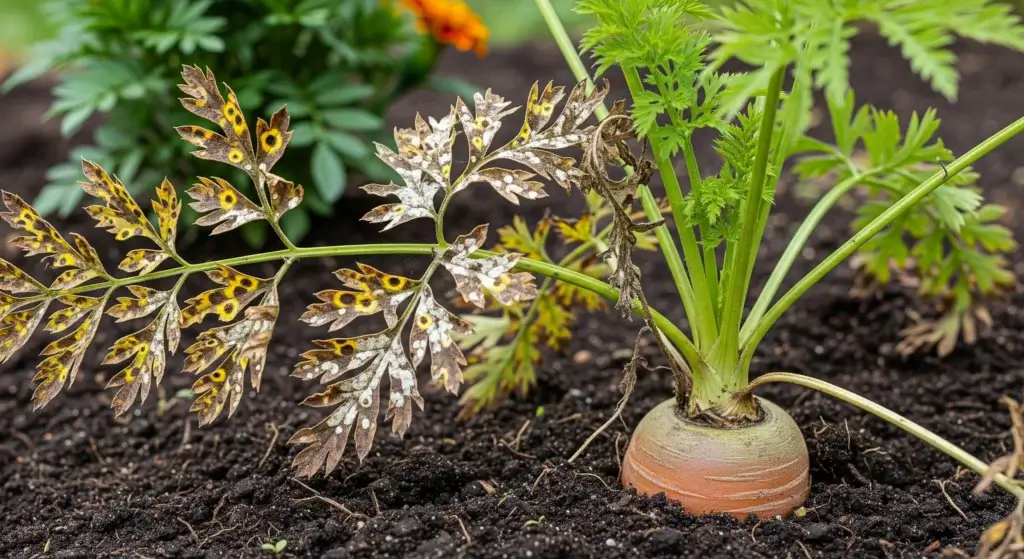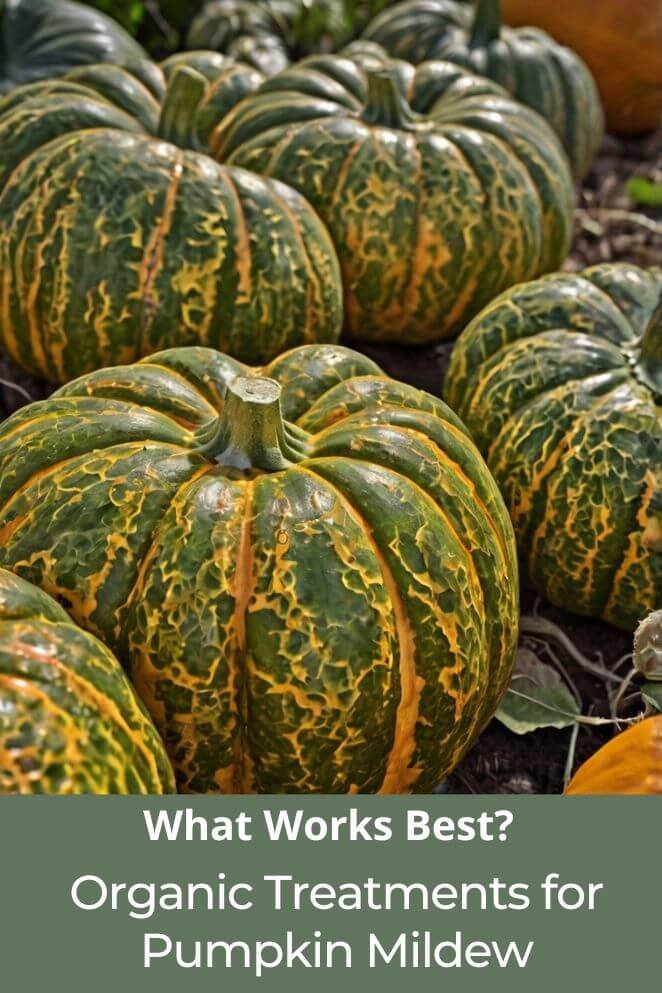
Pumpkins are a staple of fall celebrations and a beloved addition to gardens.
However, one of the most common problems pumpkin growers faces is powdery mildew.
This fungal disease can stunt pumpkin growth and diminish crop yield if not addressed promptly.
Fortunately, organic treatments can effectively manage and prevent powdery mildew without harming the environment.
In this guide, we’ll explore symptoms, impacts, and natural remedies to keep your pumpkin patch thriving.
Understanding Powdery Mildew on Pumpkins
Powdery mildew is a fungal disease caused by various species of fungi, such as Podosphaera xanthii.
It appears as a white or gray powdery substance on the leaves and stems of plants.
While it thrives in warm, dry conditions with high humidity, it can infect plants even in less-than-ideal environments.
Symptoms
Identifying powdery mildew early can prevent it from spreading and damaging your crop.
Key symptoms include:
- White, powdery spots on leaves, stems, and sometimes fruit.
- Leaves that turn yellow and curl.
- Reduced fruit development.
Impact
If left untreated, powdery mildew can:
- Limit photosynthesis by covering leaves.
- Reduce fruit quality and size.
- Increase susceptibility to other diseases.
- Lower overall crop yield.
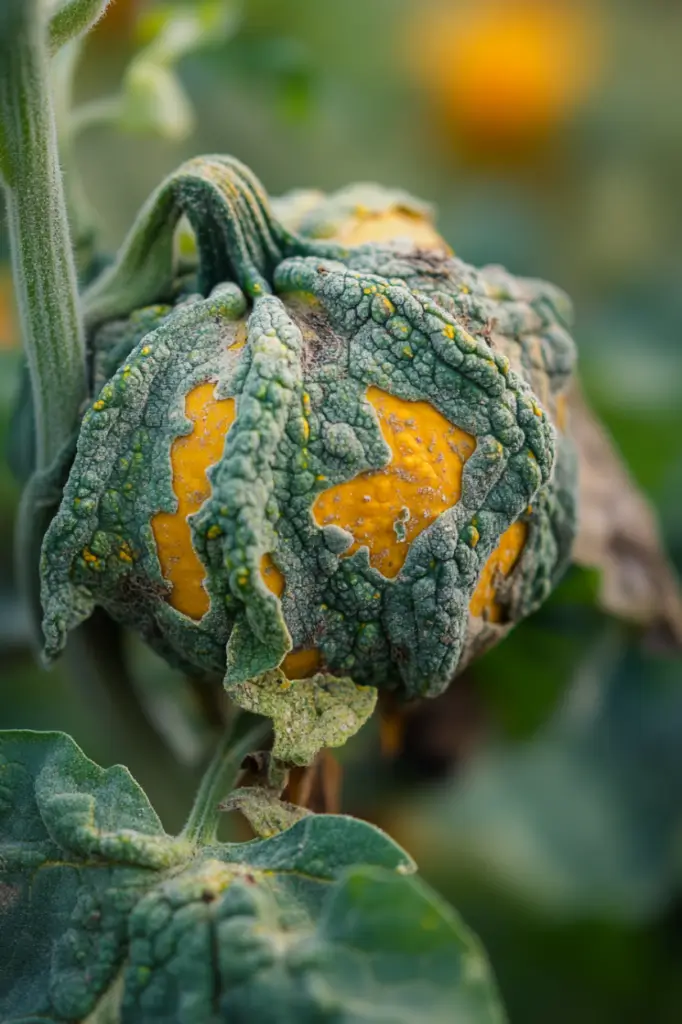
Organic Treatment Options
There’s no need to resort to harsh chemicals to combat powdery mildew.
Here are several organic treatments that are effective and eco-friendly.
Baking soda spray
Baking soda is a simple yet powerful way to disrupt the pH balance that allows powdery mildew to thrive.
How to make it
- Mix 1 tablespoon of baking soda, 1 teaspoon of liquid dish soap, and 1 gallon of water.
- Spray the solution on affected leaves once a week.
Why it works
Research shows that this baking soda spray can reduce fungal growth by up to 80% when applied regularly (Journal of Plant Pathology, 2019).
Milk spray
Milk contains proteins that act as a natural antifungal, forming a protective layer on the leaves.
How to use it
- Mix 1 part milk with 2 parts water.
- Spray the mixture on both sides of the leaves every 7-10 days.
Research insight
A study published in Crop Protection found that milk sprays can reduce powdery mildew infections by over 50%.
Neem oil spray
Neem oil is a natural pesticide that stops fungal growth and prevents the reproduction of mildew spores.
How to apply
- Mix 2 tablespoons of neem oil with 1 gallon of water.
- Spray in the early morning or late afternoon to avoid burning the leaves.
Bonus benefit
Neem oil also repels pests like aphids and whiteflies, which can further damage your plants.
Potassium bicarbonate spray
Potassium bicarbonate is another effective and safe option to fight powdery mildew.
How to prepare
Combine 1 tablespoon of potassium bicarbonate, 1 teaspoon of liquid soap, and 1 gallon of water.
Spray weekly on infected plants.
Proven effectiveness
This treatment not only stops the fungus in its tracks but can also help prevent future infections (Plant Disease Journal, 2021).
Compost tea
Compost tea boosts your plants’ immune systems and helps prevent fungal diseases.
How to make it
Steep compost in water for 24-48 hours.
Strain and spray the liquid onto your plants’ leaves.
Why it works
The beneficial microbes in compost tea outcompete harmful fungi, creating a healthier plant environment.
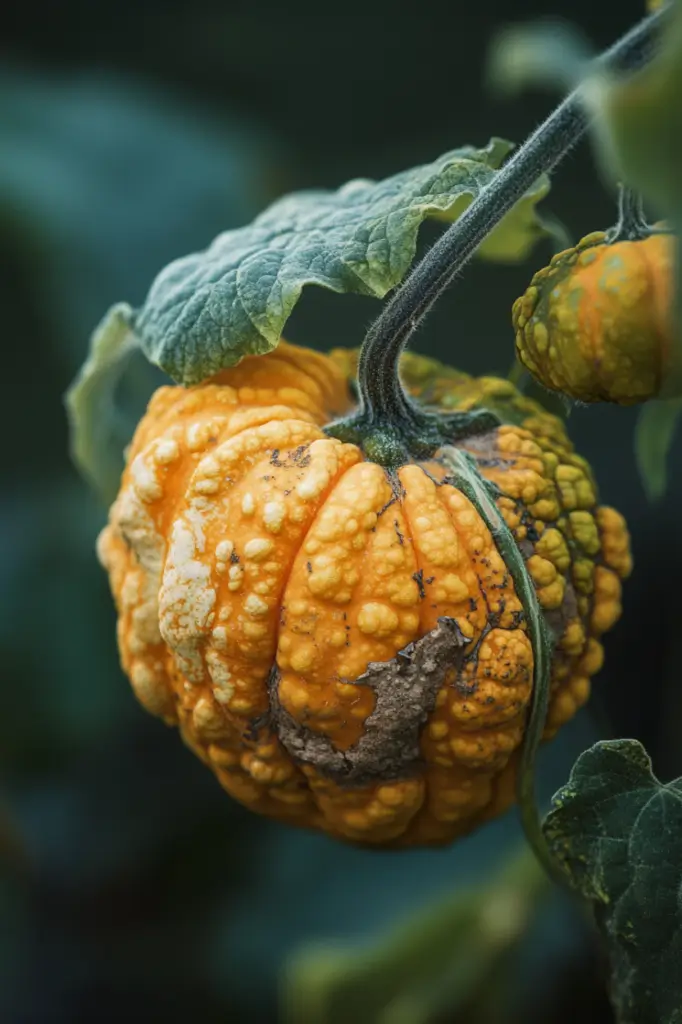
Prevention Strategies
Prevention is often the most effective way to deal with powdery mildew.
By following these simple strategies, you can reduce the chances of mildew affecting your pumpkin plants.
Proper plant spacing
Crowded plants create a humid environment where fungi can easily thrive.
Be sure to space your pumpkin plants at least 2-3 feet apart to allow for good air circulation.
This helps prevent the conditions that powdery mildew loves.
Watering techniques
Watering your pumpkins correctly is key to preventing powdery mildew.
Instead of wetting the leaves, focus on watering the base of the plants.
Early morning watering is best since it allows any excess moisture on the plants to evaporate throughout the day.
Choosing resistant varieties
Some pumpkin varieties are bred to resist powdery mildew.
Consider planting these varieties for better protection against mildew.
Popular resistant options include:
- Magic Lantern
- Howden
- Spirit
Maintain cleanliness
Regularly remove fallen leaves and plant debris, as these can harbor fungal spores.
Be sure to clean your gardening tools as well to avoid spreading mildew between plants.
By implementing these simple prevention strategies, you can help protect your pumpkins from powdery mildew and promote healthy, thriving plants.
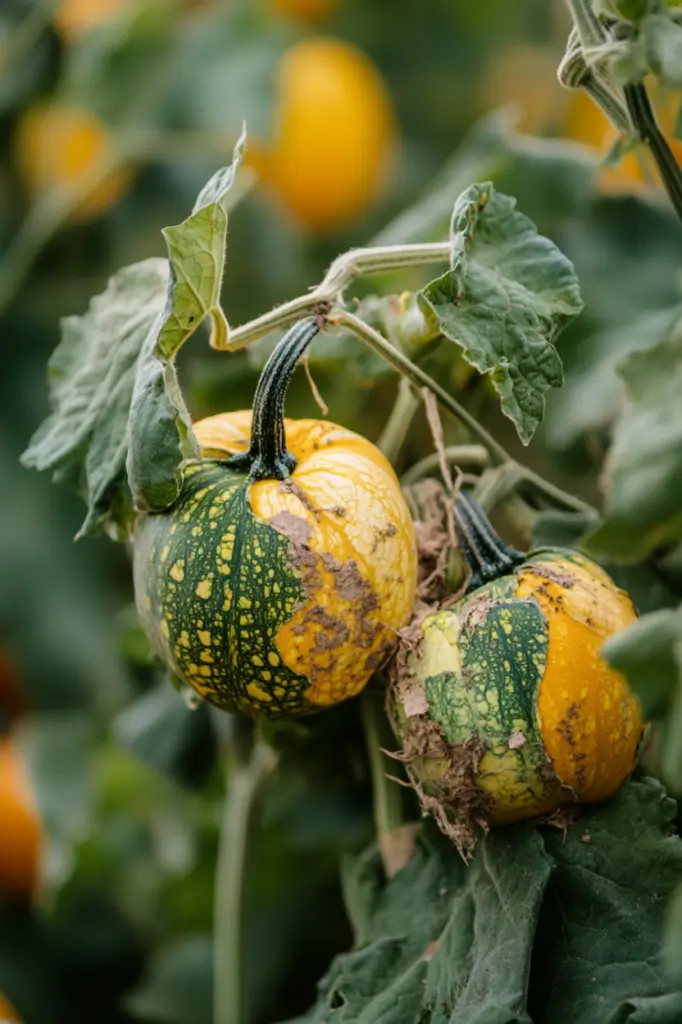
Final Thoughts
Dealing with powdery mildew doesn’t have to be daunting.
With the right organic treatments and preventative measures, you can protect your pumpkin plants and enjoy a bountiful harvest.
Remember, consistency is key when using natural remedies.
By nurturing your plants and fostering a healthy garden environment, you’re investing in a sustainable gardening future.

